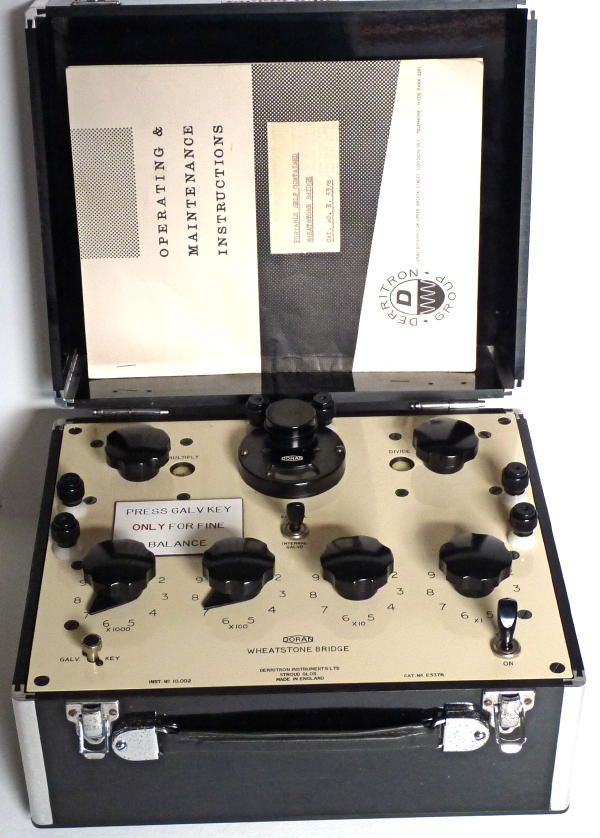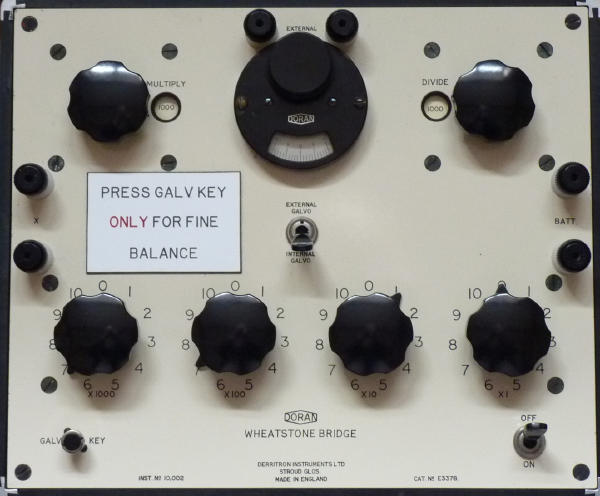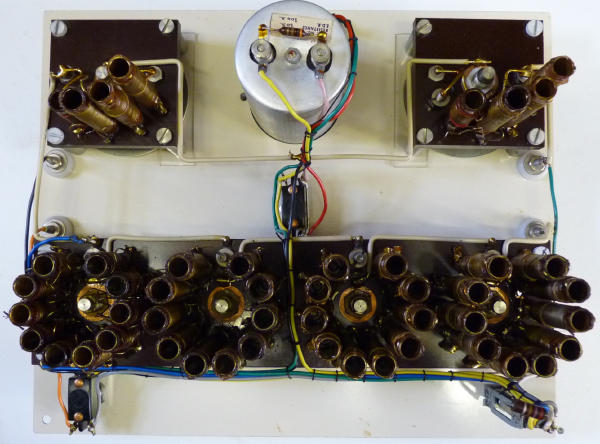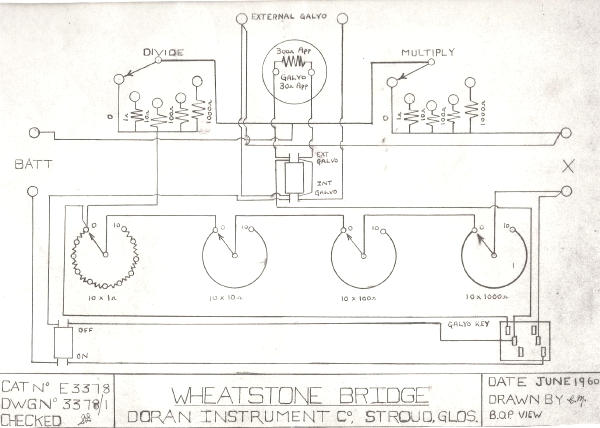
CAT No. E3378
INST No. 10,002

Doran Wheatstone Bridge When I received this instrument the meter pointer was seriously bent and when I tried straightening it it broke in two. After fruitless attempts to effect a repair I resorted to adapting the housing to accept a 1 mA meter which I adjusted to read centre zero. Working. Manufactured by Derriton Instruments Ltd, Stroud, Gloucester. UK, date 1962.
This is one of many instruments collected by Jack Davidson C Eng FIEE which I have been given by Dr Graham Winbolt

Front panel

Interior of the instrument

Back of Panel view of wiring
OPERATING INSTRUCTIONS
for
PORTABLE SELF-CONTAINED WHEATSTONE BRIDGE CAT. NO: E.3378
The Bridge consists of two ratio arms with resistances of 1, 10, 100 and 1,000 ohms coils and four decade variable resistance dials fitted with ten coils each of 1, 10, 100 and 1,000 ohms respectively. All coils are adjusted to a tolerance of within 0.1%. A pointer galvanometer is provided for detection of the null or balance point of the bridge, and a push button connects the galvanometer and supply battery to the bridge when depressed. Provision is made for connecting an external galvanometer in place of the one provided in the instrument, and a switch is fitted to enable this readily to be carried out.
Battery Voltage.
It is difficult to state a definite battery voltage as many variable factors are involved. The safe voltage for the bridge itself depends upon the ratios in use and the setting of the variable resistance, the rating of the resistance under test must also be considered since if this id overloaded and has an appreciable temperature coefficient of resistance the bridge setting will not be stable.
If too high a voltage is used trouble may be experienced with drifting readings, and too low a voltage will reduce the sensitivity of measurement.
The best combination of bridge dial settings for accuracy and freedom from overloading are to use the highest possible values of ratio arm coils or the highest possible setting of the variable resistance, depending upon the value of the resistance under test.
When measuring resistances greater than 1,000 ohms these two conditions will coincide, but when measuring resistances less than 1,000 ohms the value of the multiplying ratio coil will limit the safe bridge voltage.
In general, it is best to use the lowest battery voltage required to give adequate sensitivity and the following data is suggested as a guide and is based on a 1 watt rating for the resistance under test.
Resistor under test greater thew 1,000 ohms Bridge Volts 25
Resistor under test between 10 and 1000 ohms Bridge Volts 6
Resistor under test less than 10 Ohms Bridge Volts 2
Adequate sensitivity to discriminate to 0.1% is given when measuring
10,000 ohms with a 6 volt battery or when measuring 1 ohm with a 2 volt
battery.
NB. The push button should not be depressed except momentarily until the galvanometer deflection is on scale, Before making any measurements check the galvanometer pointer position and if necessary to zero by rotating the head.
SWS/ARB March, 1962.

